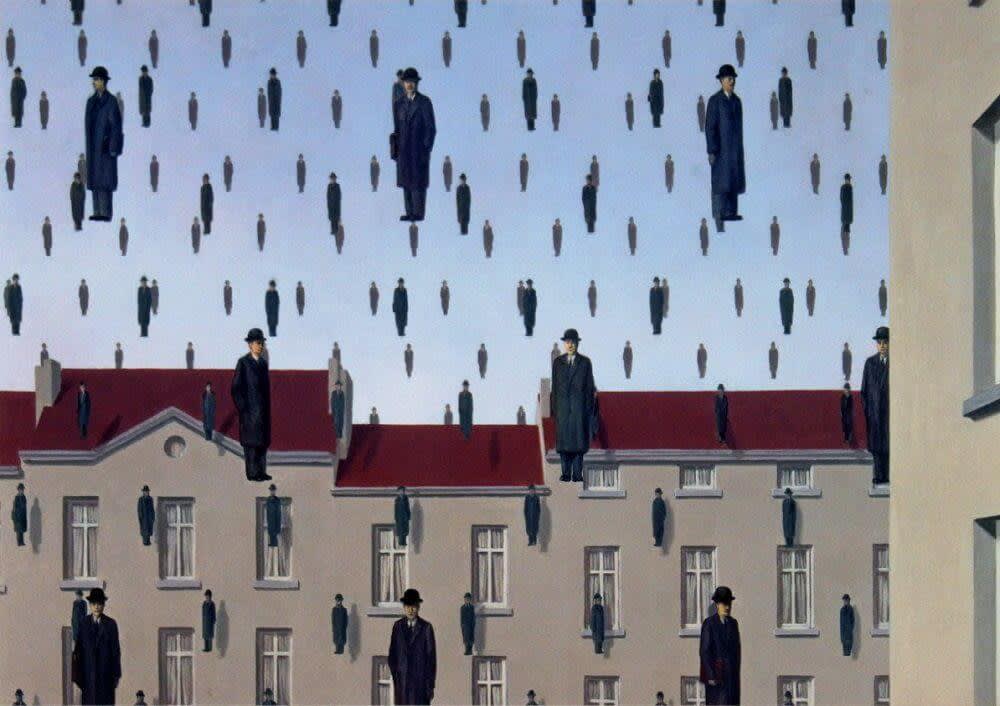
René Magritte was a surrealist artist born in Belgium in the late nineteenth century. Early tragedy shadowed him, but it also fueled his artistic fire. His work became a playground for the subconscious, where pipes smoked clouds and men walked on water (or at least, on giant apples). He didn't shy away from the strange, the ironic, the downright perplexing. In fact, he embraced it, using visual humor to make us rethink everything we thought we knew about the world.
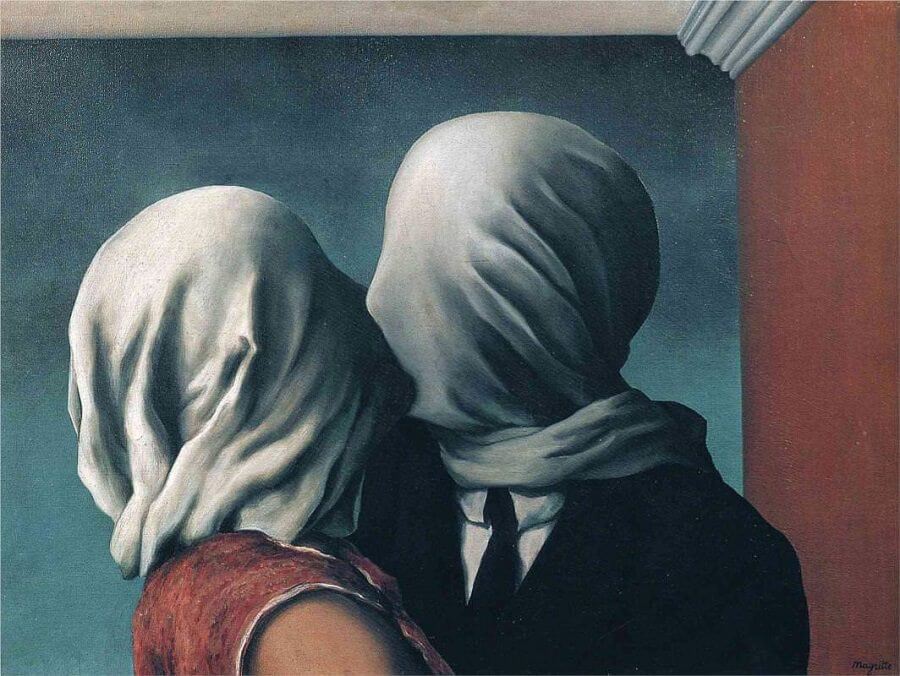
René Magritte, The Lovers, 1928, National Gallery of Australia, Canberra
- Magritte was hugely inspired by German philosopher Hegel: Though Magritte painted dreamscapes, his mind danced with philosophy. He wasn't just bending reality, he was grappling with it, inspired by thinkers like Hegel. This philosopher of "dialectics," where ideas clash and evolve, found an echo in Magritte's art. Hegel's Holiday and Applied Dialectics use the unexpected juxtaposition of objects to spark a visual thesis. The viewer becomes the observer, navigating the tension between familiar objects in unfamiliar relationships, just like Hegel's thesis and antithesis collide towards a surprising synthesis. In Magritte's hands, painting wasn't just art, it was a philosophical playground, where the brushstrokes whispered of grand ideas.
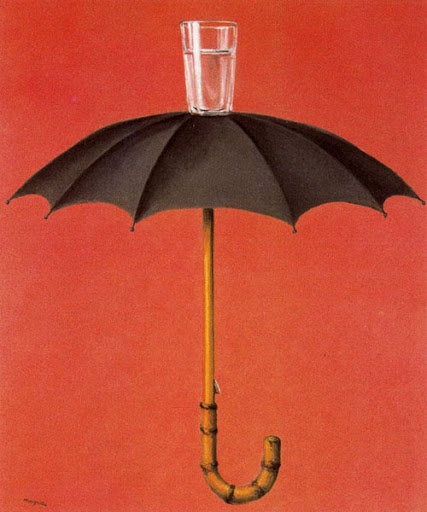
René Magritte, Hegel's Holiday, 1958, Private Collection
“I thought that Hegel would have been very sensitive to this object which has two very opposing functions: at the same time now to admit any water (repelling it) and admit it (containing it). He would have been delighted I think, or assumed (as on a vacation) and I call this painting Hegel’s Holiday.” - René Magritte
- Temporary Sojourn in Paris that changed his painting style: René Magritte spent three years in Paris, from 1927 to 1930. Initially, the city was magnetic, drawing him into the electrifying vortex of Surrealism. He met André Breton, developed deep friendships Dali, Eluard, and Ernst, and reveled in the intellectual debates and artistic ferment. Paris pushed him to evolve, his art morphing from melancholic landscapes to the witty riddles we know today.
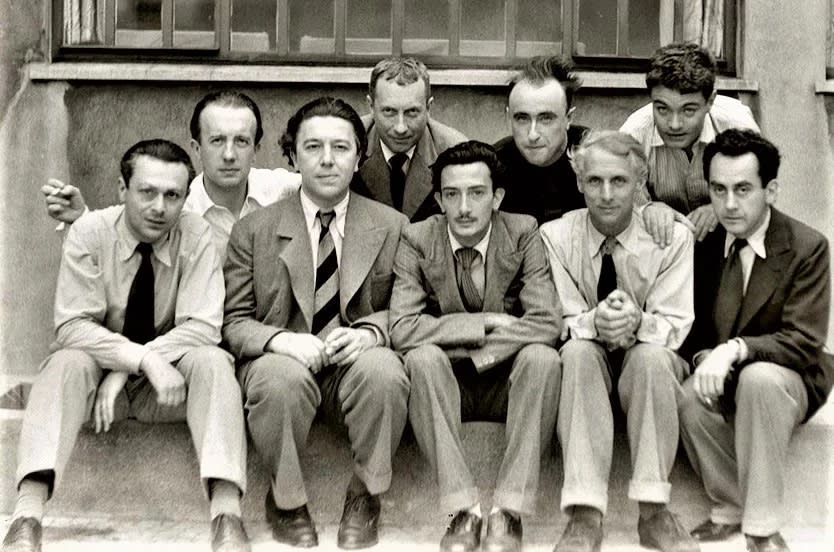
Le Groupe Surréaliste : Man Ray, Arp, Tanguy, Breton, Tzara, Dali, Eluard, Ernst Et Crevel, 1929-1930
However, the Parisian Surrealist scene also had its downsides. While Magritte loved the intellectual sparring, he found the atmosphere to be stifling. Breton's leadership proved unexpectedly prescriptive, clashing with Magritte's own vision of Surrealism. Additionally, financial difficulties mounted when his gallery contract ended, making Paris less appealing. Ultimately, it was a combination of artistic and practical factors that led Magritte back to Brussels. He craved greater creative freedom and a more stable income. Returning to Brussels, he embraced advertising once again, which sustained him financially and ironically honed his skill for visual puns and unexpected juxtapositions that later found their way back into his art. So, while Paris played a crucial role in shaping Magritte's artistic identity, it was ultimately a temporary sojourn for the enigmatic Belgian master. He left to chart his own course, his signature bowler hat forever tilted towards the mysteries, both within and beyond, the boundaries of reality.
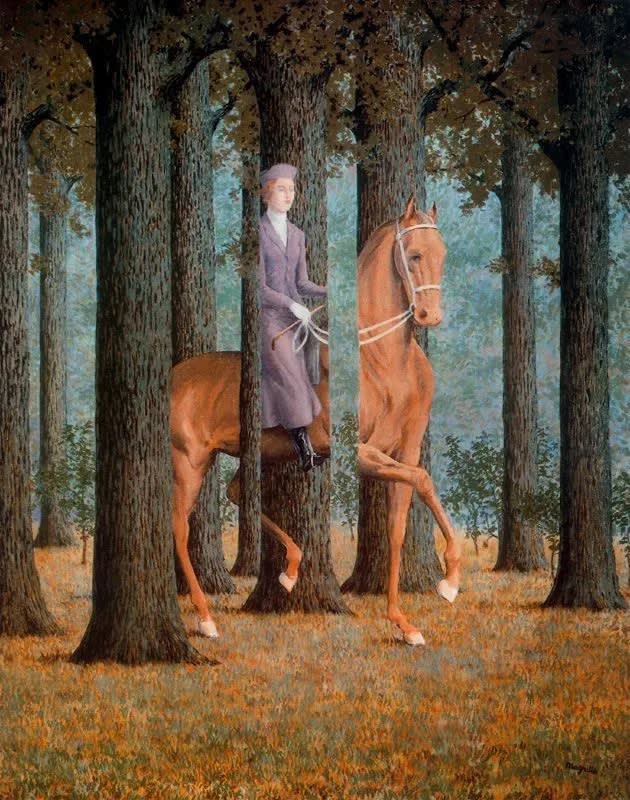
René Magritte, Carte Blanche, 1965, The National Gallery of Art, Washington DC
"Visible things can be invisible. If somebody rides a horse through a wood, at first one sees them, and then not, yet one knows that they are there. In "Carte Blanche”, the rider is hiding the tree, and the trees are hiding her. However, our powers of thought grasp both the visible and the invisible - and I make use of painting to render thoughts visible." - René Magritte
- He forged paintings and dabbled in Communism for a short while: To keep Magritte's head above water, he took to creating replicas of renowned works by Picasso, Braque, and de Chirico. Whether this was solely a means to financial security or intended to “disrupt Western bourgeois capitalist 'habits of thought'" is debatable. The jury's still out, leaving us to ponder the artist's motives alongside his brushstrokes.
Legacy: Magritte shattered our perception of reality, leaving us scrambling to piece together the meaning of bowler hats floating in clouds and pipes spewing birds. His legacy echoes in Pop Art's playful repetition, in Conceptual Art's wordplay, and in contemporary artists’ wrestle with the riddle of existence. His art shaped subsequent movements, and fundamentally changed how we see and understand Surrealism. The repeated used everyday objects, commerciality of art, and a focus on technique resonated deeply with Andy Warhol and beyond. So pervasive is his influence, that his images have almost blended into the fabric of culture, constantly re-emerging in advertising and labels.

Portrait of René Magritte in front of his painting Golconda
